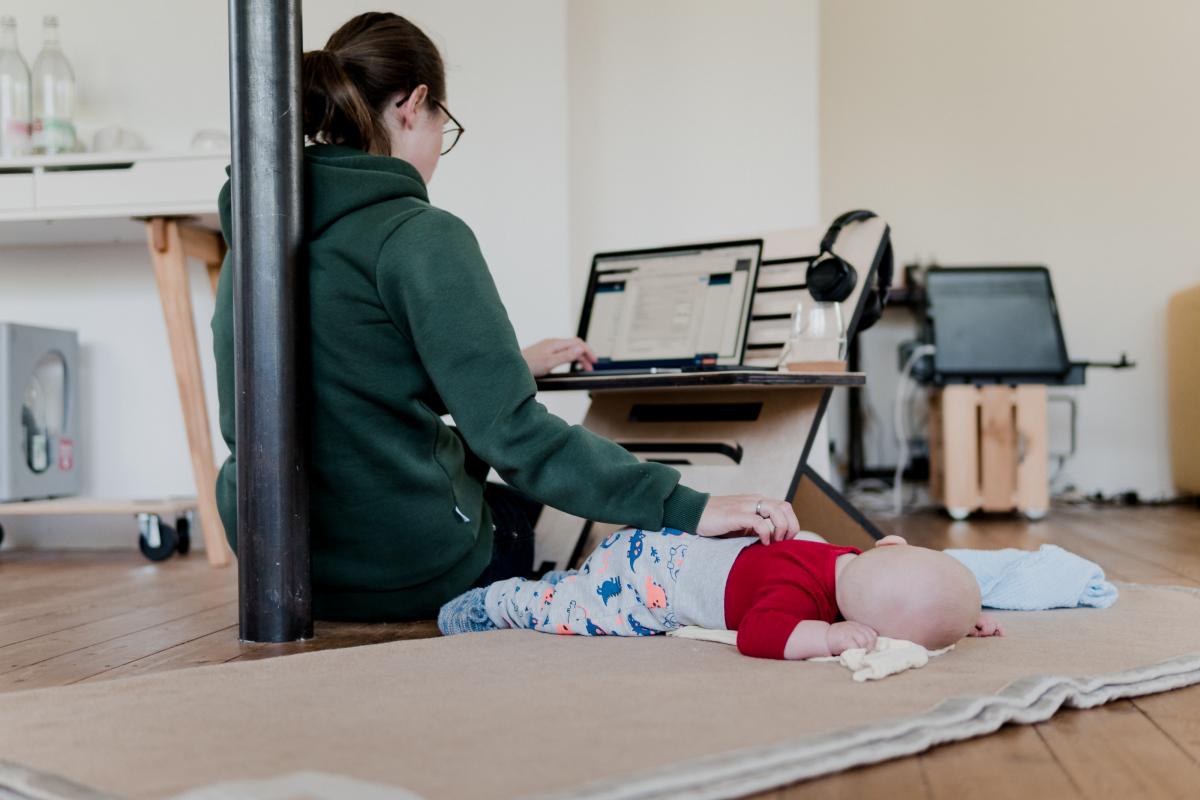If you’re a manager of a remote or hybrid team, you’re likely very familiar with the impacts of the pandemic on your staff, especially as we approach a year since the first shutdowns. Remote workers are burnt out, those returning to work are still nervous about the virus, apprehensive to go back to in-office settings. PwC surveys found that while employers are ready to bring back their staff, employees want to return to work more slowly.
No matter your situation, guiding your team through this time is challenging and complex. Use these four strategies to help your employees deal with COVID anxiety and pandemic fatigue.
1. Update and Promote New Procedures
The first way to calm worries about returning to work (regardless of when or how it happens) is to update your workplace procedures, then circulate that information company-wide. While it may seem like minor details, your staff wants to know that you’re putting their safety and wellbeing first.
If you need inspiration on updating policies, conduct a bit of research on how other companies handle post-pandemic work. For example, 83 percent of companies are investing more to professionally clean, and 92 percent plan to limit group meetings, according to a recent SERVPRO survey. Create a safe environment with new procedures and ease your team’s worries by explaining any further updates.
2. Offer Flexible Scheduling
A bright side to the pandemic is the rapid acceptance of flexible work. Companies have reimagined the modern workplace ecosystem—people work from their home offices, kitchens, and even hotels—all with great success.
According to a recent Mercer report, before COVID-19 hit, executives believed that only 45 percent of their workforce was adaptable. When forced to go remote during the pandemic, 90 percent of employers said productivity didn’t decrease. And now 82 percent plan to keep flexible work schedules post-pandemic. Quite the change of opinion!
This worldwide work-from-home experiment proved companies don’t need a physical office to be effective. Especially when combating COVID anxiety, continuing your remote and flexible work policies will go a long way in reassuring your team of their safety.
While flexible scheduling might not work for all businesses, you can adopt hybrid solutions, such as:
- Mixing remote and in-person schedules: For example, allowing your staff to WFH half the time, then planning in-office days when needed, like for essential meetings.
- Staggered schedules: Switch start and end times for teams, so fewer people are in the same building at one time. Poll your workers to see who’d like to take early vs. later shifts.
- Flexible hours: If workflow allows, let your employees set their own schedules (e.g., parents can work around their children’s school schedule or catch-up on evenings/weekends).

3. Support Mental Health
Anxiety can increase due to other mental health issues. As such, mental wellness is essential for avoiding COVID anxiety (as well as fostering an overall better experience for your employees, even post-pandemic). The best way to support your team’s mental health is to lead by example. We’re all anxious and unsure what the future will bring. As a manager, you can breach the subject and make your staff feel more comfortable about voicing their concerns. More often than not, simply addressing and discussing an uncomfortable topic can bring relief.
In a recent Harvard Business Review article, Kelly Greenwood and Natasha Krol, of Mind Share Partners, explained how managers could promote openness surrounding mental health, thus reducing trepidation. “One silver lining of the pandemic is that it is normalizing mental health challenges. […] The universality of the experience will translate into a decrease in stigma only if people, especially people in power, share their experiences. Being honest about your mental health struggles as a leader opens the door for employees to feel comfortable talking with you about mental health challenges of their own.”

So take some time to chat with your team, ask them their worries about returning to work (or even staying at home). Most importantly, don’t be afraid to share your own experiences and challenges. Ultimately, set an example by prioritizing your mental wellness.
Refer to this Hubgets guide for further insights on overcoming mental health issues.
4. Incentivize with Experiences
With COVID-19 and its effects stretching on, it’s natural that workers are nervous about getting back into close quarters with each other. On the other hand, pandemic fatigue is a very real problem as well. To revitalize your team, consider offering safe experiences as a means of recognition.
Imagine how refreshing it would be for a remote worker to be gifted a day-long stay in a local hotel, especially after living in close quarters with loved ones for months. You could position it as a WFH change of location or even a PTO staycation. Use HotelsByDay to find local options and start booking getaway experiences for your top performers!
Help Your Employees Beat COVID Anxiety
Workers are understandably anxious, tired, burned-out and hesitant about the path ahead. As a leader, you can empathize and connect to ease their journey. Openly communicate all new policies—whether they’re cleaning- or scheduling-related. Support mental health with check-ins and candidly discussing your own feelings. Utilize out-of-the-box means to motivate your staff (like getaway rewards!) during this weird period. Most importantly, remind your team that you’re all in this together.
Image Credits:
Featured Image: ‘Man looks out the window’ by Yasmina H via Unsplash
‘WFH Mom’ by StandsomeWorklifestyle via Unsplash
‘Woman on computer’ by Brandy Kennedy via Unsplash

